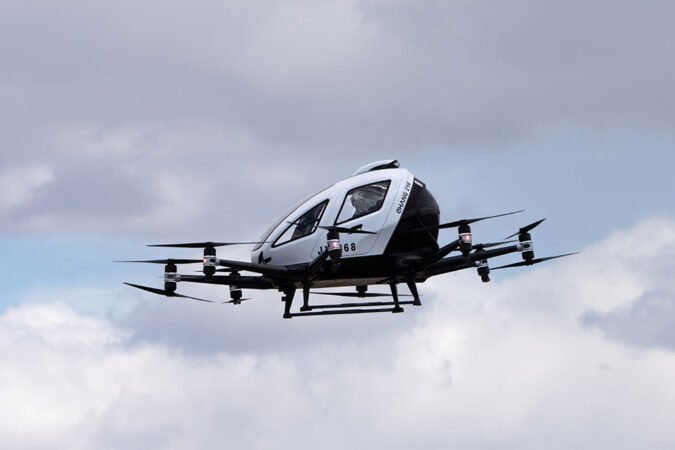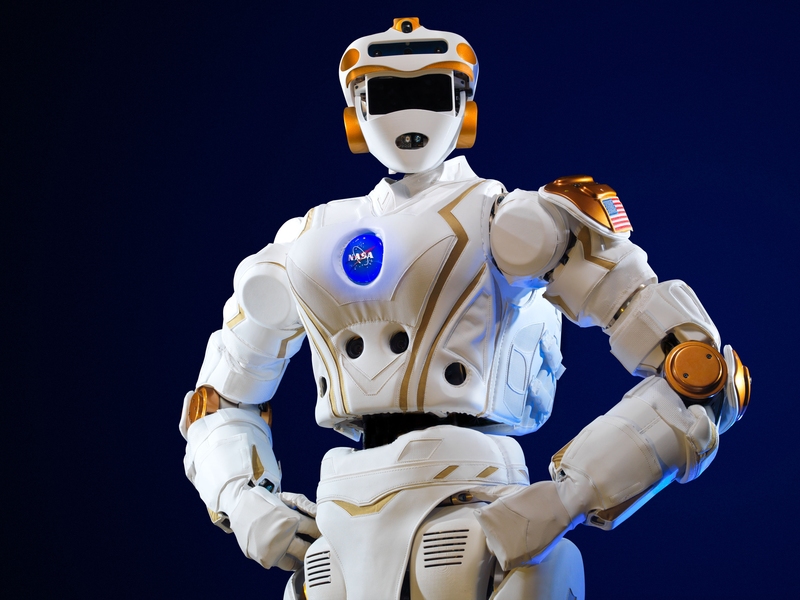The notion of flying cars has long been a staple of science fiction, from the flying DeLorean in Back to the Future to the futuristic vehicles zipping through cityscapes in The Jetsons. But as the technological landscape evolves at a breakneck pace, the once-unimaginable idea of flying cars is inching closer to reality. With advancements in aviation technology, electric propulsion systems, and autonomous navigation, the dream of flying cars is no longer confined to the pages of speculative fiction.
In this comprehensive article, we will explore the technologies that could make flying cars a reality, the hurdles that remain, and the potential impact these vehicles could have on our daily lives. We will delve into the science of how flying cars work, the companies leading the charge, and the challenges we must overcome to make them a fixture of our urban skies. So, could we soon see these flying vehicles in our skies? Let’s take an exciting journey through the tech that may soon take us there.
The Concept of Flying Cars: A Brief History
Flying cars have been a part of human imagination for centuries, with early ideas dating back to Leonardo da Vinci’s sketches of flying machines. However, the modern concept of a flying car as a personal vehicle that combines the convenience of an automobile with the flight capabilities of an aircraft has its roots in the mid-20th century.
One of the earliest prototypes came in 1947, when an engineer named Waldo Waterman developed the “Aerobile,” a combination of an automobile and an aircraft. While it showed promise, it was ultimately impractical due to its size, weight, and limited flight capabilities. Over the decades, several other attempts were made, but they were plagued by technical, regulatory, and financial challenges.
Fast forward to the 21st century, and the advent of new technologies such as electric propulsion, autonomous navigation, and advanced materials have brought the concept of flying cars closer to reality than ever before. The dream of having cars that could take off, soar through the air, and land safely in urban environments may soon be achievable with the right combination of these technologies.
The Technological Building Blocks of Flying Cars
To understand how flying cars could soon take to the skies, it’s important to break down the key technologies that are making this possible. Flying cars are essentially a blend of automotive and aviation technologies, and a number of cutting-edge innovations are required to make them practical, safe, and affordable. Let’s dive into some of the most critical components behind this technology.
1. Electric Propulsion and Vertical Takeoff and Landing (VTOL)
One of the most exciting developments in flying cars is the use of electric propulsion systems. Electric motors are lighter, more efficient, and easier to maintain than traditional combustion engines. This makes them ideal for the weight constraints and the need for reliability in flying cars. The use of electric power also helps reduce the environmental impact, making flying cars a more sustainable option compared to traditional gasoline-powered vehicles.
In combination with electric propulsion, many flying car prototypes are incorporating Vertical Takeoff and Landing (VTOL) technology. VTOL is a type of aircraft that can take off and land vertically, eliminating the need for long runways. This is a game-changer, especially for urban environments where space is limited, and traffic congestion is a major issue.
VTOL technology is already being used in drones and small aircraft, and it is now being adapted for flying cars. These vehicles often feature multiple rotors or tilt-wing designs, which allow them to take off and land vertically like a helicopter but then transition to horizontal flight for higher speeds. By combining electric propulsion and VTOL, flying cars can theoretically operate in cities without requiring large airports or runways, making them a highly practical solution for urban mobility.
2. Autonomous Navigation and AI
One of the major hurdles that flying cars must overcome is navigation. Flying in a crowded urban environment, where traditional cars and other flying vehicles would coexist, requires a high level of precision and safety. This is where autonomous navigation and artificial intelligence (AI) come into play.
Autonomous flying cars rely on advanced AI systems to navigate the airspace, avoid obstacles, and ensure safe takeoffs, landings, and in-flight maneuvers. These AI systems are typically equipped with a variety of sensors, including LIDAR (Light Detection and Ranging), radar, and cameras, which provide real-time data about the surrounding environment.
Additionally, machine learning algorithms are used to improve the vehicle’s ability to predict and react to dynamic changes in the environment, such as weather conditions, air traffic, and potential hazards. Autonomous flight systems can ensure that flying cars can operate safely even in crowded or complex airspace, making them much more practical for everyday use.
3. Lightweight Materials and Advanced Manufacturing
Another crucial aspect of flying cars is their weight. Unlike traditional cars, which are designed to be driven on the ground, flying cars must be able to take off and remain airborne, which requires significant lift and thrust. To achieve this, the materials used in their construction need to be both strong and lightweight.
Many flying car prototypes are using carbon fiber, titanium alloys, and composite materials to reduce weight while maintaining structural integrity. These materials are already widely used in the aerospace industry due to their ability to withstand the stresses of flight without adding excessive weight.
Moreover, advancements in additive manufacturing (3D printing) are enabling manufacturers to create complex components with reduced weight and increased precision. This opens up new possibilities for the design of flying cars, allowing for more efficient use of space and materials.
4. Battery Technology and Energy Density
One of the biggest challenges in making flying cars a reality is developing batteries with enough energy density to power the vehicle for a reasonable amount of time. Unlike electric cars, which can afford to be heavier due to their ground-based operation, flying cars need lightweight, high-capacity batteries that can provide enough power to keep the vehicle in the air for long enough to be useful for daily commutes or short trips.
Battery technology is improving rapidly, with solid-state batteries and fast-charging technologies offering promising solutions. However, the energy density of current lithium-ion batteries is still a limiting factor in the range and performance of flying cars. Companies are actively working on overcoming these limitations by developing better batteries that could one day allow flying cars to travel hundreds of miles on a single charge.
The Companies Leading the Charge
Several innovative companies are racing to develop flying cars, each with their unique approach and vision for the future of urban mobility. Let’s take a look at some of the most notable players in the flying car industry and their progress.
1. Terrafugia (A Geely Company)
Terrafugia, a subsidiary of Chinese automotive giant Geely, has been a leader in the flying car space for years. Their Transition vehicle, which is both a car and an aircraft, has made significant strides toward commercial viability. The Transition is designed to fold its wings and drive on roads like a conventional car, but it can also take off from small airports and fly like a small plane.
While the Transition is not yet available for public use, Terrafugia is also working on a VTOL aircraft known as the TF-X, which would be capable of autonomous flight. The TF-X aims to be a fully electric, four-passenger flying car that could be used for urban commuting, providing a glimpse into the future of flying vehicles.
2. Joby Aviation
Joby Aviation is one of the most high-profile companies working on VTOL flying cars. Their aircraft, the Joby S4, is an all-electric, five-seat aircraft that uses six rotors for vertical lift and horizontal flight. The company has made significant progress in testing its prototype and has received substantial investment from companies such as Toyota and Uber.
Joby’s S4 is designed to be used for urban air mobility, offering on-demand flights that could bypass traffic and reduce congestion. The company has already received approval from the U.S. Federal Aviation Administration (FAA) to begin flight testing, bringing them one step closer to making flying cars a commercial reality.
3. Vertical Aerospace
Based in the UK, Vertical Aerospace is another company focused on developing electric VTOL aircraft for urban air mobility. Their VA-X4 is a fully electric, four-passenger aircraft that uses four tilt-rotors to achieve vertical takeoff and landing. The VA-X4 is designed to be a safe, quiet, and efficient alternative to traditional helicopters.
Vertical Aerospace has partnered with a number of aerospace companies, including Rolls-Royce, to develop the VA-X4 and other flying vehicle concepts. With support from major players in the aviation industry, Vertical Aerospace is well-positioned to play a key role in the future of flying cars.
4. AeroMobil
AeroMobil is a Slovakian company that has been developing flying cars since 2010. Their AeroMobil 4.0 is a hybrid vehicle that can drive on roads like a conventional car and transform into an aircraft for flight. The AeroMobil 4.0 features a foldable wing design, allowing it to transition between driving and flying modes seamlessly.
The company is focusing on creating a flying car that could be used for both personal and commercial transportation, aiming to provide a convenient and sustainable alternative to traditional vehicles and aircraft.
Challenges Facing the Flying Car Industry
While the technology behind flying cars is advancing rapidly, there are still several challenges that must be addressed before they can become a widespread reality. Let’s explore some of the key obstacles facing the flying car industry.
1. Regulatory Hurdles
One of the biggest challenges for flying cars is regulation. Airspace is highly regulated by governments around the world, and introducing a new type of vehicle that operates in urban environments would require a complete overhaul of existing laws and regulations. Governments will need to create new frameworks for things like air traffic control, flight safety, certification, and licensing to accommodate flying cars.
In addition, urban air mobility will require extensive collaboration between regulatory bodies, aircraft manufacturers, and city planners to ensure that flying cars can be safely integrated into crowded urban environments without disrupting existing air and ground transportation systems.
2. Safety and Public Perception
Flying cars will need to meet stringent safety standards to gain public trust. This includes ensuring that the vehicles can operate safely in various weather conditions, avoid mid-air collisions, and land without issues in emergency situations. Autonomous systems, while promising, will need to be foolproof in order to prevent accidents caused by human error or system malfunctions.
Public perception will also play a significant role in the widespread adoption of flying cars. People will need to feel comfortable with the idea of flying cars sharing the skies with traditional aircraft, drones, and other vehicles. Education and outreach will be crucial in ensuring that the public understands how flying cars will work and how they will be kept safe.
3. Infrastructure
For flying cars to become a viable form of transportation, significant investments in infrastructure will be necessary. This includes the construction of vertiports—specialized takeoff and landing zones designed for VTOL aircraft. These vertiports will need to be strategically placed in cities, airports, and other key locations to facilitate the seamless operation of flying cars.
Additionally, cities will need to adapt their infrastructure to accommodate flying cars. This may include redesigning airspace management systems, upgrading traffic control systems, and building facilities to support the maintenance and charging of flying vehicles.
The Future of Flying Cars
The dream of flying cars may be closer to reality than we think. With advances in electric propulsion, autonomous navigation, and lightweight materials, the technologies needed to make flying cars a common mode of transportation are already in development. Several companies are pushing the envelope, testing prototypes and securing funding to bring their vision to life.
However, there are still significant challenges to overcome. Regulatory hurdles, safety concerns, and the need for new infrastructure will all require time, effort, and investment to address. But as history has shown, humanity has a knack for turning the impossible into the possible. In the coming years, we could very well see flying cars taking to the skies, changing the way we live, work, and travel forever.
The future of flying cars is not just about the technology; it’s about transforming how we think about transportation. Could we soon see them in our skies? It’s not as far-fetched as it once seemed. The sky’s the limit for what might come next.






